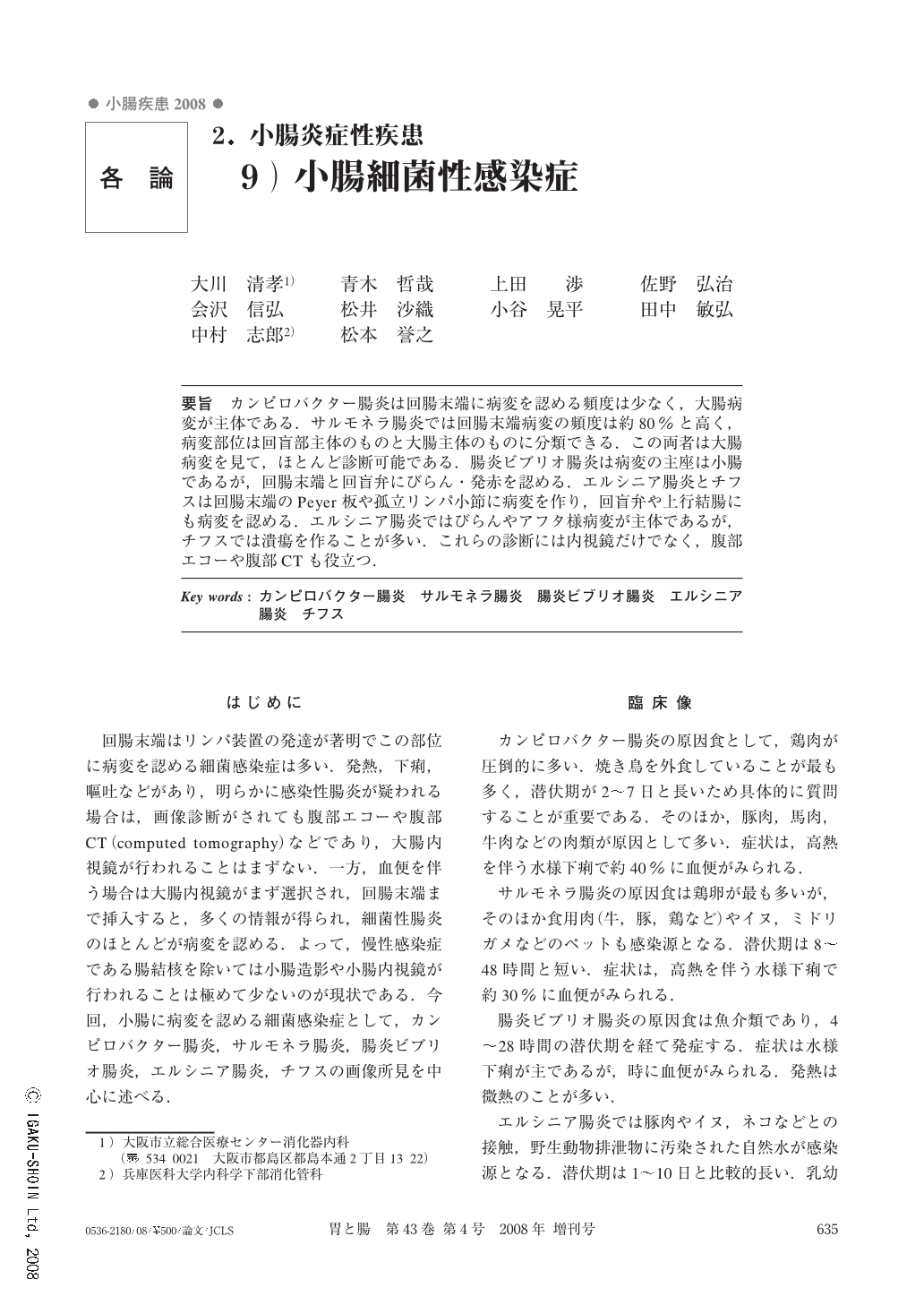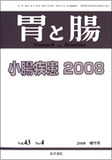Japanese
English
- 有料閲覧
- Abstract 文献概要
- 1ページ目 Look Inside
- 参考文献 Reference
- サイト内被引用 Cited by
要旨 カンピロバクター腸炎は回腸末端に病変を認める頻度は少なく,大腸病変が主体である.サルモネラ腸炎では回腸末端病変の頻度は約80%と高く,病変部位は回盲部主体のものと大腸主体のものに分類できる.この両者は大腸病変を見て,ほとんど診断可能である.腸炎ビブリオ腸炎は病変の主座は小腸であるが,回腸末端と回盲弁にびらん・発赤を認める.エルシニア腸炎とチフスは回腸末端のPeyer板や孤立リンパ小節に病変を作り,回盲弁や上行結腸にも病変を認める.エルシニア腸炎ではびらんやアフタ様病変が主体であるが,チフスでは潰瘍を作ることが多い.これらの診断には内視鏡だけでなく,腹部エコーや腹部CTも役立つ.
In Campylobacter enterocolitis, lesions in the terminal ileum are relatively infrequent, and mainly occur in the large intestine. On the other hand, lesions are found in the terminal ileum in 80%of cases of Salmonella enterocolitis. These lesions are classified by site, i. e., whether they occur mainly in the ileocecum or the large intestine. Campylobacter enterocolitis and Salmonella enterocolitis are usually diagnosable by endoscopic examination of the large intestine. The lesions of Vibrio parahaemolyticus enterocolitis are mainly found in the small intestine, though the terminal ileum and ileocecal valve exhibit erosions and erythema. Yersinia enterocolitis and Typhoid fever demonstrate lesions in Peyer patches and isolated lymph nodes, though lesions are also found in the ileocecal valve and ascending colon. Erosions and aphthoid ulcers are mainly observed in Yersinia enterocolitis, while ulcers are frequently noted in Typhoid fever. Not only endoscopy but also abdominal echography and abdominal CT are useful in the diagnosis of these diseases.

Copyright © 2008, Igaku-Shoin Ltd. All rights reserved.


